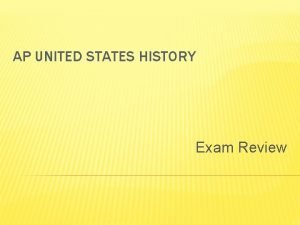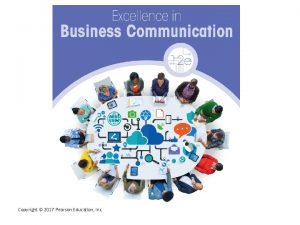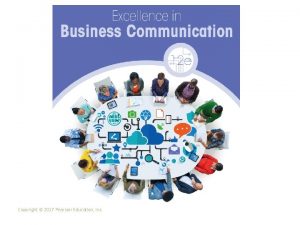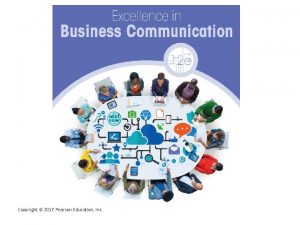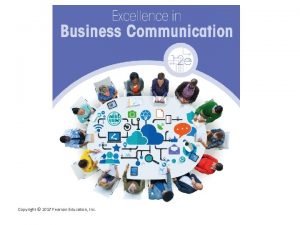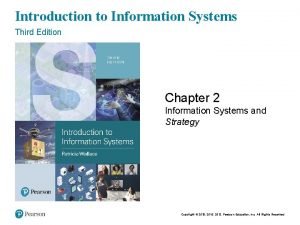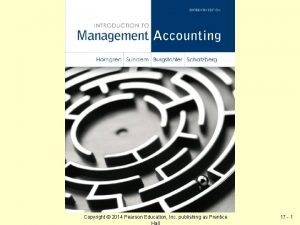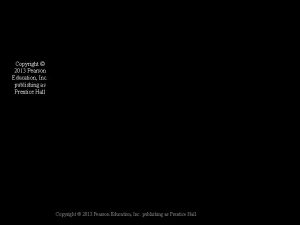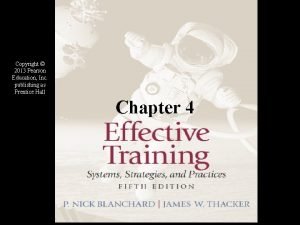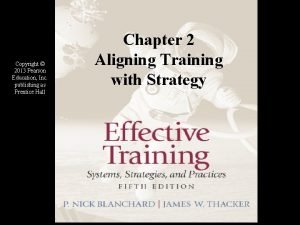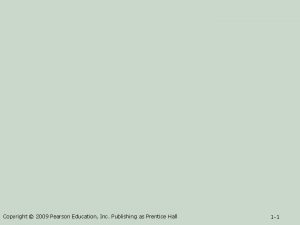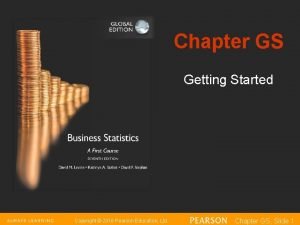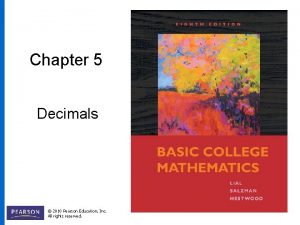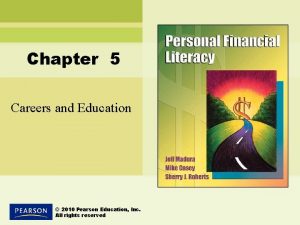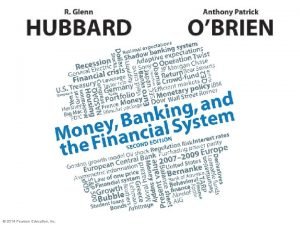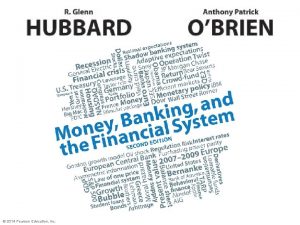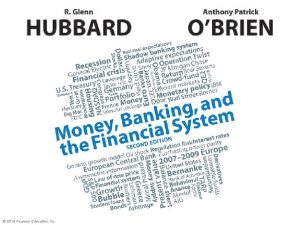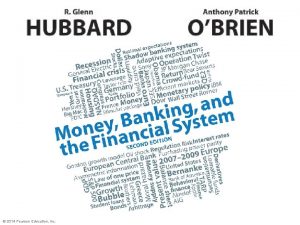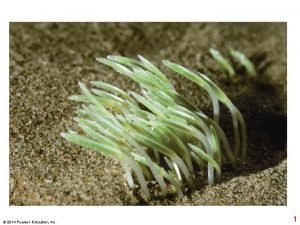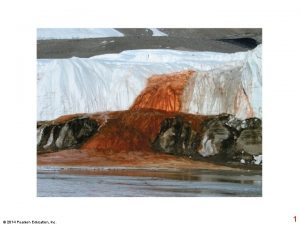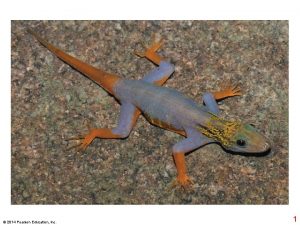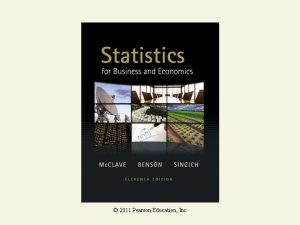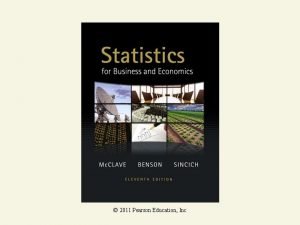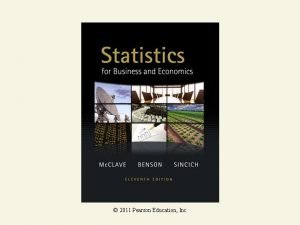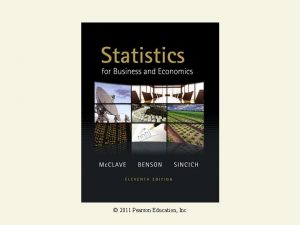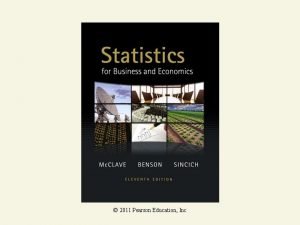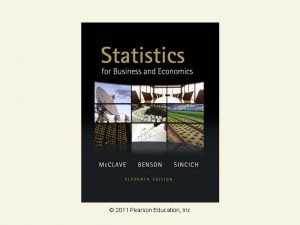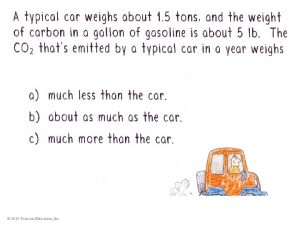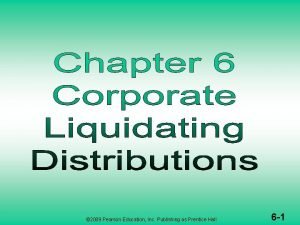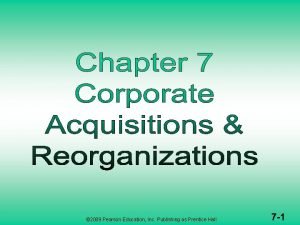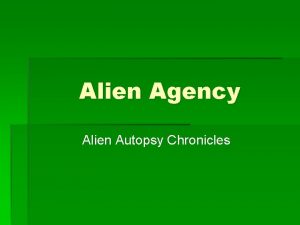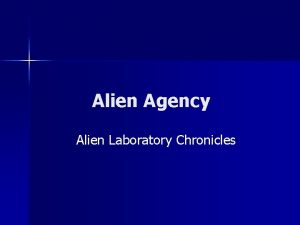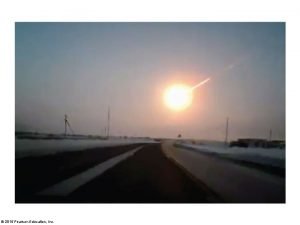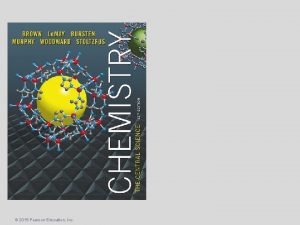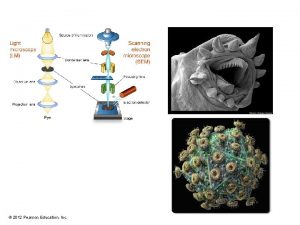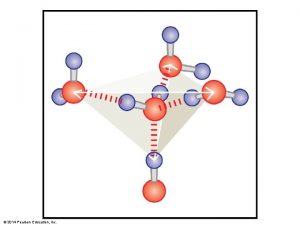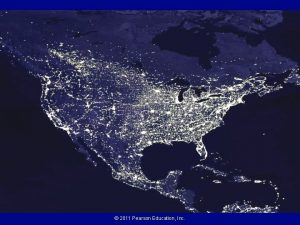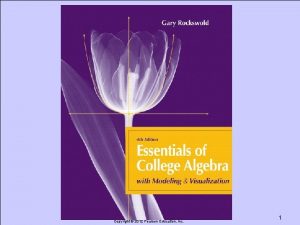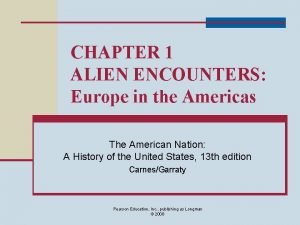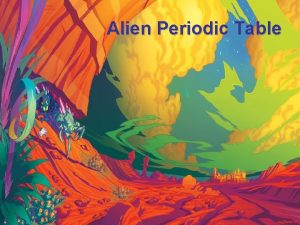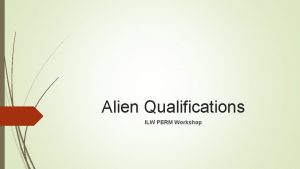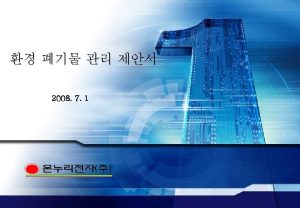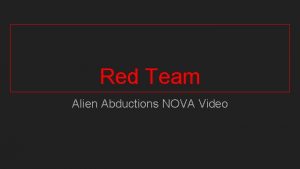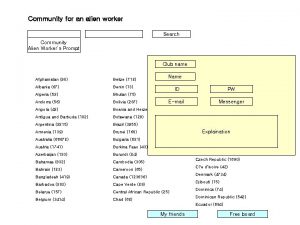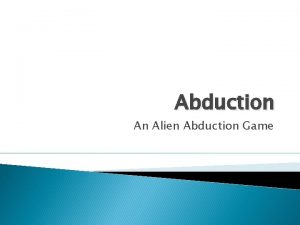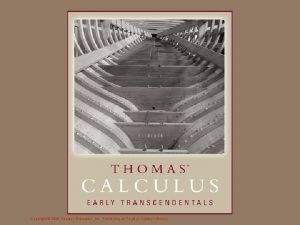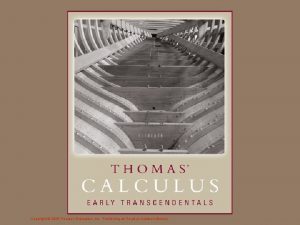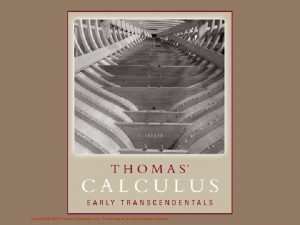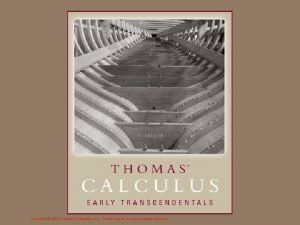Pearson Education Inc 2006 CHAPTER 1 Alien Encounters













































- Slides: 45

Pearson Education, Inc. © 2006 CHAPTER 1 Alien Encounters: Europe in the Americas The American Nation, 12 e Mark. C. Carnes John A. Garraty

Pearson Education, Inc. © 2006 COLUMBUS • TIERRA!—Christopher Columbus made landfall at the West Indian island he called San Salvador (natives called it Guanahani) on October 12, 1492 • Columbus was looking for a shortcut to the lands of Japan and China (visited by Marco Polo) so he did not realize he had discovered a New World

APPEAL OF ASIA Pearson Education, Inc. © 2006 • Columbus was searching for a route to Asia for reasons of trade • Spices: pepper, cinnamon, ginger, nutmeg, cloves helped cover the taste of spoiled meat • Tropical foods: rice, figs, oranges • Other goods: perfumes, silk & cotton, rugs, textiles, dyestuffs, fine steel products, precious stones, various drugs • Became part of the “columbian exchange”

Pearson Education, Inc. © 2006 SPAIN’S AMERICAN EMPIRE • In 1493, Pope Alexander VI divided the non. Christian world between Spain and Portugal and the terms of exploitation were worked out in the Treaty of Tordesillas • The line that was drawn intended to leave Africa to Portugal and the New World to Spain but the South American continent protruded and, as a result, Brazil became Portuguese territory • The Spanish spread out from their base on Hispaniola (Santo Domingo)

Pearson Education, Inc. © 2006 Voyages of Discovery

Pearson Education, Inc. © 2006 SPANISH DISCOVERIES • 1513: Vasco Nuñez de Balboa crossed the Isthmus of Panama and discovered the Pacific Ocean • 1519: Hernán Cortés conquered the Aztecs • 1519: Ferdinand Magellan started 3 year voyage around world • 1530 s Francisco Pizarro conquered the Incas

SPANISH DISCOVERIES Pearson Education, Inc. © 2006 • 1539 -1543 Hernando de Soto traveled north from Florida to the Carolinas, then westward to the Mississippi River • At the same time Francisco Vásquez de Coronado ventured as far north as Kansas and as far west as the Grand Canyon

Pearson Education, Inc. © 2006 SPANISH MOTIVES • Greed for gold and power • Sense of adventure • Wish to improve their lives • Desire to Christianize Indians

Pearson Education, Inc. © 2006 INDIANS & EUROPEANS • The Requiermento, read in Spanish upon landing, promised the natives would be welcome if they did not resist, but that any struggle would result in the enslavement of both the natives and their families • Laid the blame for enslavement on the victims • Spanish were not alone, wherever Europeans landed they mistreated and sometimes slaughtered the people they encountered • Even in New England, where relations were initially amicable and somewhat fair, conditions deteriorated within a few years

Pearson Education, Inc. © 2006 RELATIVITY OF CULTURAL VALUES —Religion • Indians worshipped a variety of gods but Europeans saw them as non-religious • Worse, viewed them as heathens or even minions of Satan • Some saw them as unworthy of conversion while others, such as the Spanish friars, believed in the value of conversion • As late as 1569, when Spain introduced the Inquisition in the colonies, natives were exempt because they were viewed as incapable of rational judgment

Pearson Education, Inc. © 2006 RELATIVITY OF CULTURAL VALUES —Environment • Indians cleared fields, burned underbrush in the forests, diverted rivers and streams, built roads and settlements, and built huge earthen mounds • Yet due to metal plows and axes, the European imprint was deeper and more devastating

Pearson Education, Inc. © 2006 RELATIVITY OF CULTURAL VALUES —Property • Generally, Indians did not value private property • Europeans saw this lack of concern for material things as an indication that Indians were childlike creatures, not to be treated as equals • Also saw as justification to take the land use it “properly”

Pearson Education, Inc. © 2006 RELATIVITY OF CULTURAL VALUES —Government • Europeans assumed Indian chiefs ruled with the same authority as their own kings • Instead Indian loyalties were shaped by complex kinship relations • As a result, Europeans often accused Indians of treachery when some failed to honor commitments made by their chiefs • Indians, for their part, did not understand such European customs as child rulers

Pearson Education, Inc. © 2006 RELATIVITY OF CULTURAL VALUES —Land • Indians held land communally • Tribal boundaries were traditional and not marked by treaties or fences • Agricultural products were often stored communally and drawn on by all as needed • Indians resented the intensity of European cultivation

RELATIVITY OF CULTURAL VALUES —Warfare Pearson Education, Inc. © 2006 • Indians did not seek to possess land as a result did not seek to destroy their enemies but – to prove their own valor – to avenge an insult or perceived wrong – to acquire captives who could take the place of missing family members

DISEASE & POPULATION LOSS Pearson Education, Inc. © 2006 • But biggest killer was the many diseases (smallpox, measles, bubonic plague, diphtheria, influenza, malaria, yellow fever, and typhoid) Europeans brought with them • Indians had no immunity, resulting in several million deaths

Pearson Education, Inc. © 2006 BEGINNINGS OF ENGLISH SETTLEMENT • The first settlement, on Roanoke Island off the coast of North Carolina in 1585, was sponsored by Sir Walter Raleigh • Ships due to arrive in 1588 to re-supply did not come due to the attack of the Spanish Armada and when ships did arrive in 1590, not a trace of the colonists could be found

SETTLEMENT OF VIRGINIA Pearson Education, Inc. © 2006 • In 1607 the first 100 settlers arrived and settled Jamestown in the Chesapeake Bay area • Unfortunately, 1/3 of settlers were gentlemen, many of the rest were gentlemen’s servants • With few wilderness skills and more spent time hunting gold than planting crops, over half died the first winter Portrait of Pocahontas, from painting by Wm. Sheppard Library of Congress, Prints and Photographs Division, Detroit Publishing Company Collection

Pearson Education, Inc. © 2006 JAMESTOWN • While company directors stressed futile pursuits, Captain John Smith urged his fellow colonists to build houses and raise food and asked for the company to send more settlers with useful skills • Recognizing the weakness of the colonists, Smith tried to maintain good relations with the local Indians though he had few compunctions about cheating them and little respect for them • Between 1606 and 1622, the London Company invested more than £ 160, 000 and sent over 6000 colonists • No dividends were ever paid and by 1622 only 2, 000 colonists were alive and that number was down to 1, 300 two years later

Pearson Education, Inc. © 2006 JAMESTOWN • BAD NEWS: While the colonists were dependent on aid from the Powhatan Indians, they treated them badly and soon were engaged in warfare with them • GOOD NEWS: Colonists began to prosper when started raising their own food and cattle and especially when they began tobacco cultivation

Pearson Education, Inc. © 2006 TOBACCO • In 1612, John Rolfe introduced West Indian tobacco. • While the advent of tobacco allowed colonists to buy manufactured goods, by then they had served their seven years of indenture; since the London Company had made it easy for settlers to obtain their own land, no profit went to the London Company

SELF-GOVERNMENT Pearson Education, Inc. © 2006 • In 1619 created rudimentary selfgovernment with the creation of a House of Burgesses consisting of delegates chosen in each district

Pearson Education, Inc. © 2006 ROYAL COLONY • In 1622 a bloody attack by the Powhatans who suffered increasing colonial encroachment on their land resulted in the deaths of 347 colonists • While not enough to stop the growing colony, morale sank and James I revoked the charter in 1624 and placed the colony under direct royal control

Pearson Education, Inc. © 2006 “PURIFYING” THE CHURCH OF ENGLAND • Henry VIII had broken from the Catholic Church and founded the Anglican Church • It was under his second daughter Elizabeth (1558 -1603) that the Anglican Church became the official church for all of England • This church closely resembled the Catholic Church except the King/Queen of England was the head of the church and services were in English not Latin

Pearson Education, Inc. © 2006 DISSENTERS • On one side were ardent Catholics who chose to leave England or practice their faith in private • On the other were more radical Protestants (Puritans) who felt changes had not gone far enough and insisted the church needed to be “purified” of Roman leftovers

DISSENTERS Pearson Education, Inc. © 2006 • Separatists—unlike Puritans did not believe that Church could be saved, instead they believed it was necessary to separate from it, which meant they either had to go into exile or underground

Pearson Education, Inc. © 2006 PILGRIMS • In 1608, 125 separatists left England for the Low Countries, first to Amsterdam then to Leyden • By 1619 disheartened by the difficulties of making a living, disappointed by failure of others from England to join them, and distressed that their children were being led astray from the path of righteousness, these “Pilgrims” decided to leave in search of a better place

Pearson Education, Inc. © 2006 TO AMERICA • The Puritans negotiated with the Virginia Company to settle at the mouth of the Hudson River on the upper edge of the company’s territory • The Pilgrims formed a joint stock company to help pay for the trip as well as taking non. Pilgrims (of 100 who set out only 35 were Pilgrims) • Left from Plymouth, England, on the Mayflower, in September 1620; in December, arrived at Cape Cod Bay, north of their destination and the territory controlled by the London Company

Pearson Education, Inc. © 2006 A NEW COMPACT • Pilgrims were outside the area controlled by the London Company so in order to establish a government they drew up the Mayflower Compact, thus establishing the early American ideal that a society should be based on a set of rules chosen by its members • The Pilgrims went ashore at Plymouth and suffered through a winter of starvation in which half died

Pearson Education, Inc. © 2006 TISQUANTUM • The Pilgrims were aided in survival when in March 1621, Samoset, an Algonquian Indian who spoke English, introduced them to Tisquantum (called Squanto by the Pilgrims) who had been in England • Squanto taught the Pilgrims how to plant and served as an intermediary with Massasoit, chief of the large local Wampanoag tribe

Pearson Education, Inc. © 2006 MASSACHUSETTS BAY COLONY • While only a minority of migrating Puritans came to Massachusetts, by 1640 over 10, 000 had arrived • They had less difficulty than Jamestown because of the constant influx of new recruits who came with families and worldly possessions in tow • Believing their mission to be divinely inspired, they elected John Winthrop as governor, a position he held for 20 years

Pearson Education, Inc. © 2006 A CITY ON A HILL • Winthrop declared that the Puritan settlement would be “as a City upon a Hill, the eies of all people are upon us…. ” • Colonists created an elected legislature, the General Court, and limited the vote and office holding to male members of the church though clergymen were not allowed to hold office

PURITAN CHURCHES Pearson Education, Inc. © 2006 • Membership was restricted to those who could present satisfactory evidence of having experienced “saving grace” • In the 1630 s, the majority of people were members.

Pearson Education, Inc. © 2006 TROUBLEMAKERS: Roger Williams & Anne Hutchinson • ROGER WILLIAMS: an extreme separatist who arrived in 1631 and was minister in Salem by 1635, quickly offended everyone through his religious libertarianism and his insistence that it was a sin to take land without buying it from the Indians • By the end of 1635, Williams was asked to leave the colony within 6 weeks which he did in January 1636 • He traveled to the head of Narragansett Bay, worked out a deal with the Indians and founded Providence, establishing Rhode Island Providence Plantations after obtaining a charter from Parliament in 1644

TROUBLEMAKERS: Roger Williams & Anne Hutchinson • ANNE HUTCHINSON: arrived in Boston in 1631 where, as a midwife, she often discussed with women her criticisms of the minister • Debate was over issue of who God’s “Saints” were Pearson Education, Inc. © 2006 – Ministers said could not be sure so had to monitor your behavior – Hutchinson said that smacked of Catholicism and Saints should just know; also suggested that those possessed of God’s grace were exempt from the rules of good behavior and even from the laws of the Commonwealth (accused of antinomianism) • After claiming regular communication with God, Hutchinson was banished and left with supporters for Rhode Island in 1637 • In 1642 she moved to the Dutch colony of New Netherland where she and all but her youngest child were killed by Indians

Pearson Education, Inc. © 2006 OTHER NEW ENGLAND COLONIES • Massachusetts purchased Maine in 1677 and New Hampshire became a royal colony in 1680 • In 1635, Reverend Thomas Hooker founded Hartford and helped draft the Fundamental Orders that governed the towns of Connecticut valley in 1639 • By 1662 Connecticut had obtained a royal charter

Pearson Education, Inc. © 2006 MARYLAND & THE CAROLINAS • After the 1630 s, it was increasingly easy to create successful colonies (mostly through royal charters) and many were encouraged to do so as prospects in England Europe worsened • Proprietors obtained large land grants and then granted land to settlers for a small annual rent while holding on to undeveloped land for speculative purposes

Pearson Education, Inc. © 2006 MARYLAND • Granted by Charles I to George Calvert, Lord Baltimore, and a Catholic who wanted a haven for his co-religionists • First settlers arrived in 1634, founding St. Mary’s which quickly turned to tobacco production similar to nearby Jamestown • The need to attract settlers meant Lord Baltimore had to abandon his feudal privileges and allow settlers to own their farms and have a say in local affairs • While Calvert had wanted a colony of Catholics there was a large Protestant majority which resulted in a Toleration Act in 1649 that guaranteed freedom of religion to anyone who believed in Jesus Christ

Pearson Education, Inc. © 2006 CAROLINAS • The proprietors of Carolina tried to exercise their granted powers by drafting the Fundamental Constitutions which created a hereditary nobility and a landed hierarchy that proved unworkable • The first settlers arrived in 1670, mostly from Barbados, where slave labor was driving out small independent farmers • Charles Town (Charleston) was founded in 1680 while another population center formed just south of Virginia in Albemarle with settlers from predominantly from Virginia • Charles Town engaged in a thriving trade in furs and the export of foodstuffs to the West Indies while the Albemarle settlement was poorer and more primitive • The two separated in 1712, becoming North and South Carolina

Pearson Education, Inc. © 2006 THE MIDDLE COLONIES • English and Dutch trade rivalries resulted in King Charles II granting his brother James, Duke of York, the entire area between Connecticut and Maryland (which included the Dutch colony of New Netherland) • In 1664 English forces captured New Amsterdam and its population of 1500 without a fight and the rest of the colonies soon followed • Life remained much the same under English rule as it had under Dutch, though a local assembly was established in the 1680 s

Pearson Education, Inc. © 2006 NEW JERSEY • In 1664, the Duke of York gave New Jersey (the region between the Hudson and the Delaware) to John, Lord Berkeley, and Sir George Carteret who offered land on easy terms, established freedom of religion, and a democratic system of local government • A considerable number of New England Long Island Puritans moved to the colony

Pearson Education, Inc. © 2006 PENNSYLVANIA • William Penn was responsible for the main Quaker settlement when King Charles II paid off his debt by giving Penn the region north of Maryland west of the Delaware River in 1681 • In 1682, Penn founded Philadelphia in his new colony of Pennsylvania which had gained Delaware as a gift from the Duke of York

Pearson Education, Inc. © 2006 PENNSYLVANIA • Penn treated the Indians fairly and opened settlement to anyone who believed in one God • However, in government he was more paternalistic and the assembly could only approve or reject laws proposed by the governor and council • Penn promoted his colony tirelessly and succeeded in attracting settlers including a large number of Germans (Pennsylvania Dutch— derived from deutsch) • By 1685 there were almost 9, 000 settlers and by 1700 there were twice that number • The colony produced wheat, corn, rye and other crops

INDIANS & EUROPEANS as “AMERICANIZERS” Pearson Education, Inc. © 2006 • Interaction between Indians and Europeans was typical of the settlement years • Colonists learned a great deal from the Indians – Names of plants and animals – What to eat in their new home and how to catch or grow it (especially corn) – What to wear – How to best get from one place to another (birchbark canoes particularly helpful) – How to fight – In some respects, how to think

FUR TRADE Pearson Education, Inc. © 2006 • The fur trade shifted Indian patterns – Hunting parties became larger – Villages shifted nearer trade routes and European forts – Some groups combined into confederations to control larger hunting territories
 Pearson education, inc. publishing as prentice hall
Pearson education, inc. publishing as prentice hall Pearson education 2011
Pearson education 2011 Pearson education inc publishing as pearson prentice hall
Pearson education inc publishing as pearson prentice hall Pearson education inc. 2012
Pearson education inc. 2012 Copyright 2008
Copyright 2008 Transatlantic encounters in history of education download
Transatlantic encounters in history of education download 2018 pearson education inc
2018 pearson education inc Pearson education limited 2017
Pearson education limited 2017 Copyright by pearson education inc. answers
Copyright by pearson education inc. answers 2017 pearson education inc
2017 pearson education inc 2017 pearson education inc
2017 pearson education inc 2017 pearson education inc
2017 pearson education inc 2017 pearson education inc
2017 pearson education inc 2016 pearson education inc
2016 pearson education inc 2015 pearson education inc
2015 pearson education inc 2014 pearson education inc
2014 pearson education inc 2013 pearson education inc
2013 pearson education inc 2013 pearson education inc
2013 pearson education inc 2013 pearson education inc
2013 pearson education inc 2013 pearson education inc
2013 pearson education inc Pearson education 2012
Pearson education 2012 2012 pearson education inc
2012 pearson education inc Pearson education 2012
Pearson education 2012 2010 pearson education inc
2010 pearson education inc Copyright 2010 pearson education inc
Copyright 2010 pearson education inc 2009 pearson education inc
2009 pearson education inc 2016 pearson education inc
2016 pearson education inc 2010 pearson education inc answers
2010 pearson education inc answers 2010 pearson education inc answers
2010 pearson education inc answers 2014 pearson education inc
2014 pearson education inc 2014 pearson education inc
2014 pearson education inc 2014 pearson education inc
2014 pearson education inc 2014 pearson education inc
2014 pearson education inc 2014 pearson education inc
2014 pearson education inc Water cycle pearson education
Water cycle pearson education 2014 pearson education inc
2014 pearson education inc 2012 pearson education inc
2012 pearson education inc 2011 pearson education inc
2011 pearson education inc 2011 pearson education inc
2011 pearson education inc 2011 pearson education inc
2011 pearson education inc Friedman rank test
Friedman rank test 2011 pearson education inc
2011 pearson education inc 2011 pearson education inc
2011 pearson education inc 2010 pearson education inc answers
2010 pearson education inc answers 2009 pearson education inc
2009 pearson education inc 2009 pearson education inc
2009 pearson education inc





